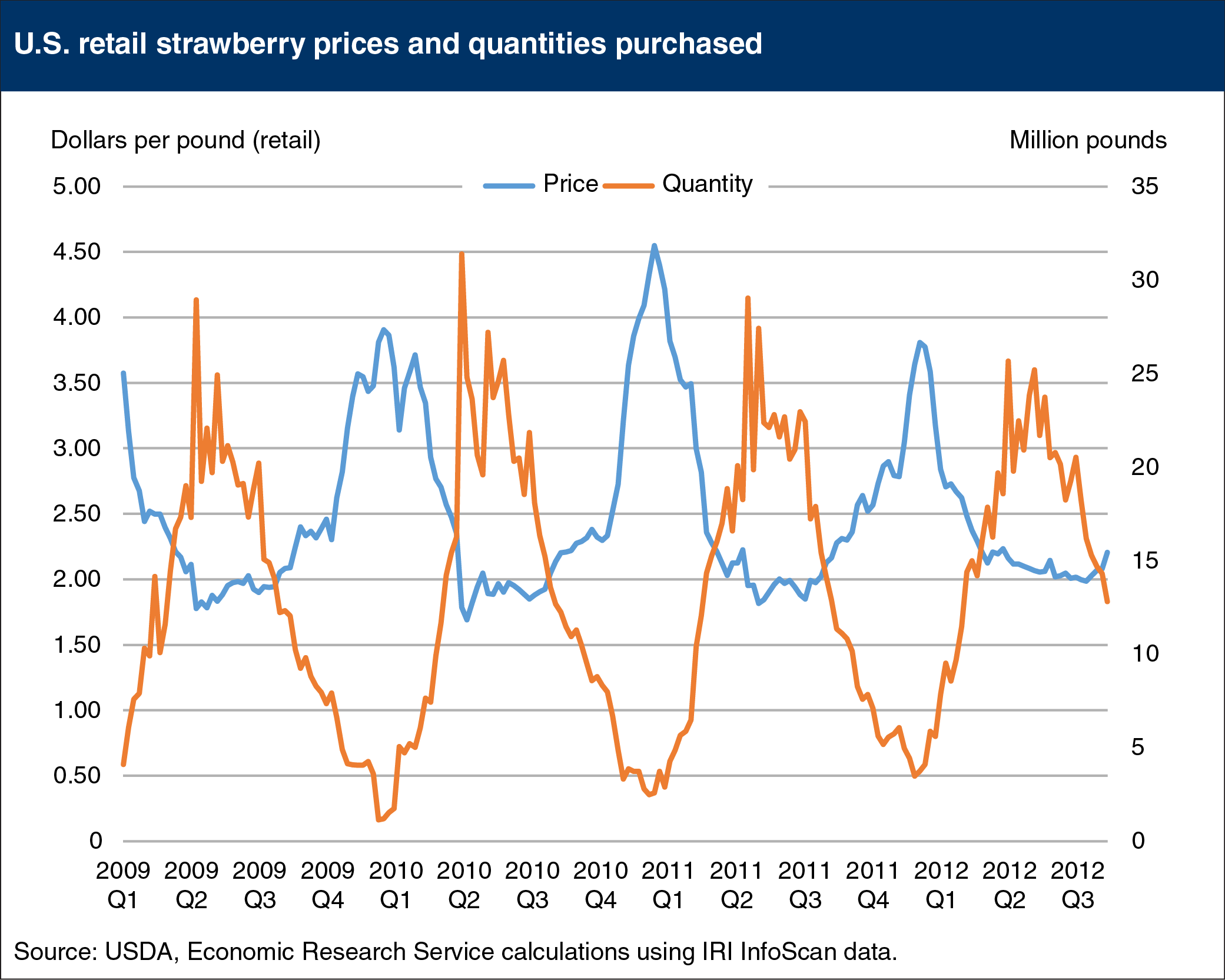For berries, the price and quantity purchased is highly seasonal
- by Carlos Arnade
- 11/9/2015

The U.S. retail supply of fresh produce differs from that of manufactured foods, which are available year-round with stable prices. For many produce items, the seasonality of domestic production limits the quantity available in winter to a small fraction of that available during spring or summer, leading to higher retail prices in the off-season. For example, retail strawberry prices in late December can often be more than twice as high as prices in May. Until the early 2000s, berries were not available to most consumers outside the short domestic production seasons. Advances in trade and technology have changed that, and imports—particularly during the fall and winter months, when the supply of domestic berries is at its lowest—are leading to more consistent year-round availability and lower off-season prices. Consumers benefit through the potential for lower food expenditures and greater variety in their diets. This chart is from the ERS report, Measuring the Impacts of Off-Season Berry Imports.

